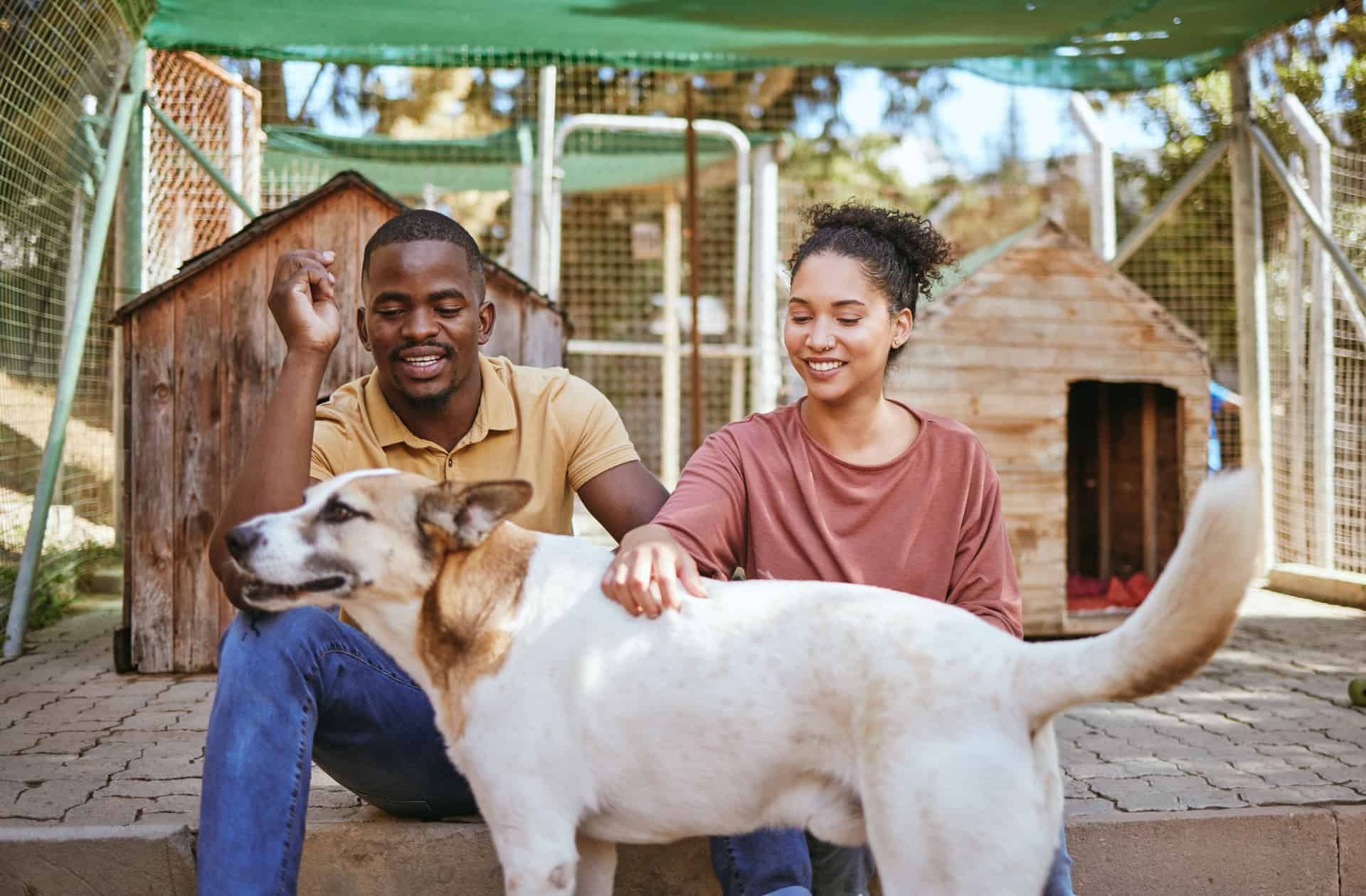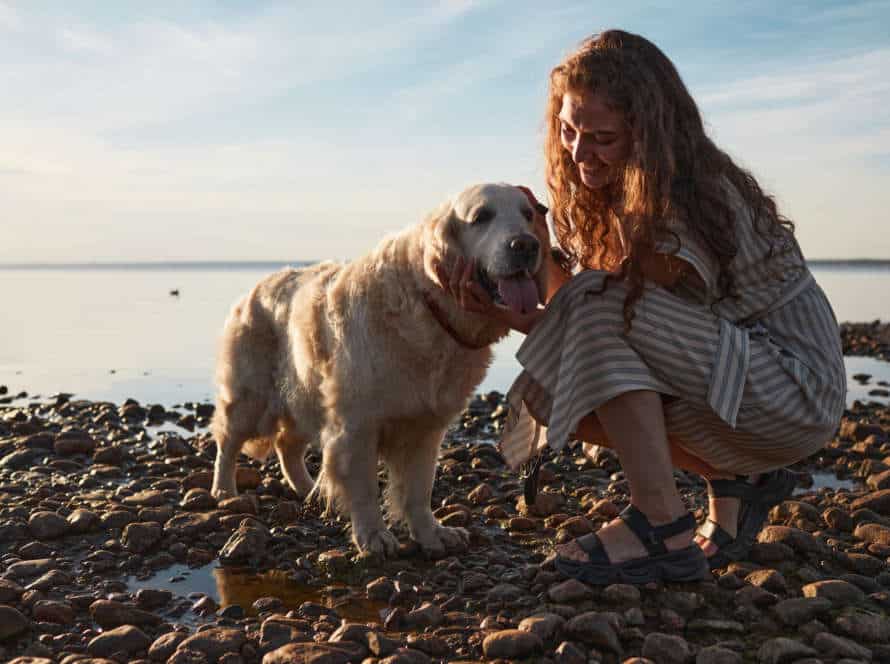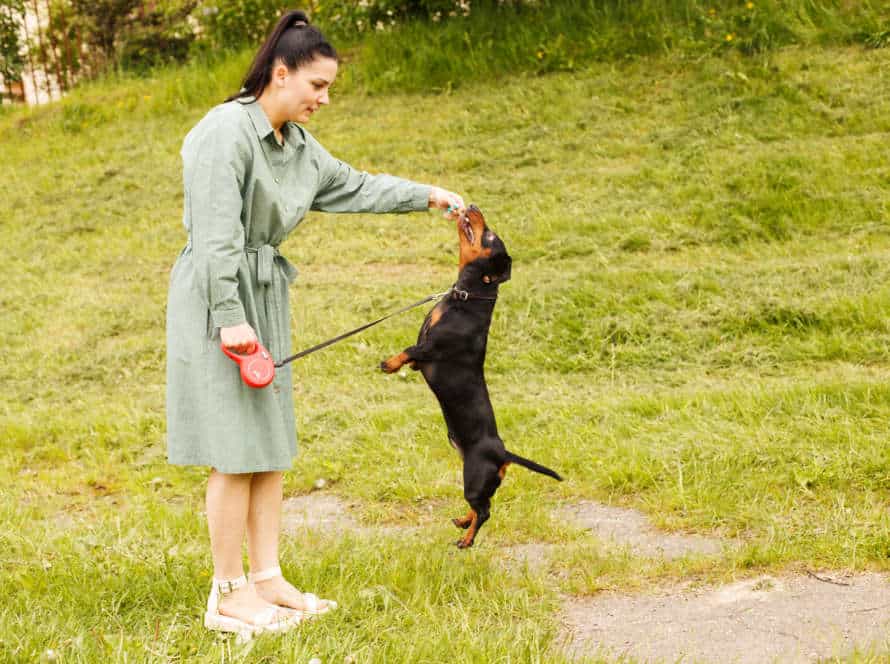Understanding Separation Anxiety in Rescue Dogs
Separation anxiety is common in rescue dogs and can cause distress. Signs of this may include barking, howling, destruction, and more. To provide the best care, it is important to know the reasons for this anxiety. We can recognize signs of separation anxiety, so we can address it better. Let’s look deeper into understanding separation anxiety in rescue dogs.
Differentiating between separation anxiety and general adjustment disorder
Distinguishing between separation anxiety and general adjustment disorder in rescue dogs can be tricky. Both cause similar symptoms, but there are some key differences.
Separation Anxiety: When a pup is apart from its owner or primary caregiver, they may suffer extreme stress and anxiety. Signs include: excessive barking, destructive behavior, and loss of appetite. This often shows up within the first few weeks of adoption.
General Adjustment Disorder: A milder form of anxiety that crops up when a pup adjusts to a new environment or routine. Symptoms may be: lethargy, disinterest in food or drink, and losing interest in toys or games. Generally, this resolves after a few days or weeks of adoption.
It’s essential to consult with a veterinarian or animal behaviorist for accurate diagnosis and treatment of either condition in rescue dogs.
Causes of separation anxiety in rescue dogs
Rescue dogs may experience separation anxiety due to their past trauma and lack of socialization. Reasons for this include:
- Prior abandonment or neglect- Dogs that have faced this may be scared to trust humans and feel anxious when left alone.
- No socialization- When a dog doesn’t get to meet other dogs or people, they may become anxious when left by themselves.
- Traumatic experiences- If a dog has faced abuse, neglect, or accidents, they may act out destructively when alone.
- Change in routine- If a dog’s owner changes their work schedule or moves house, the pup may become anxious.
Recognizing the cause of the anxiety can help treat it. Pro tip: For severe cases, seek professional help – as it can be a serious disorder.
Identifying signs of separation anxiety in rescue dogs
Rescue dogs can suffer from separation anxiety. Here’s what to watch out for:
- Being destructive when left alone – like chewing, scratching, or digging too much.
- Barking, howling, or whining when the owner is away.
- Trying to escape or breaking out of confinement.
- Peeing or pooping inside the house in the owner’s absence.
- Pacing or being restless before the owner leaves or arrives.
If any of these signs are seen in your rescue dog, take action quickly. This will help ease their anxiety and stop any harm to them or your home. It’s a good idea to get a professional dog behaviorist or trainer to help manage separation anxiety in rescue dogs.
Addressing Separation Anxiety in Rescue Dogs
Rescue dogs often struggle with separation anxiety. This is due to the high-stress and traumatic situations they experience during the adoption process. It can show itself through barking, chewing, or toileting inside. Luckily, there are steps to take to help the rescue dog and its family have a happier life.
Establishing a routine for your rescue dog
Rescue dogs need routine and consistency. This is vital if they have separation anxiety. To create a routine:
- Work out the best times for feeding, exercising and training, depending on the age, breed and energy level.
- Set up spaces like a bed, food bowl and toys. This creates a sense of security.
- Start with short periods of separation. Increase it gradually.
- Use rewards like treats and praise to encourage good behaviour.
Creating a routine takes time and patience. But it helps a rescue dog feel safe in their new home.
Gradual desensitization to being alone
Dogs with separation anxiety can benefit from desensitization techniques. Follow these steps:
- Leave for short periods like 5-10 minutes.
- Gradually increase the time as pup gets used to it.
- Reward good behavior with treats, toys and praise.
- Don’t make a fuss while leaving or coming home.
- Use aids such as crate or thundervest to help the pup feel secure.
- Consult vet or behaviorist if anxiety persists.
Pro Tip: Stay patient and consistent!
Positive reinforcement training techniques to alleviate anxiety
Positive reinforcement training can reduce anxiety in rescued pooches, especially those with separation anxiety. This is a serious issue that can lead to destruction, barking, and even self-harm. Thankfully, positive reinforcement can help dogs feel more relaxed and confident. Here are some tips:
- Praise or reward good behaviour. When your dog is calm, give them treats, compliments, or play time.
- Make a safe area. Give your pup a cozy spot, like a crate or room, where they can feel secure.
- Teach crate training. Use treats and compliments to get your pup used to entering and leaving their crate.
- Desensitize gradually. Start with brief periods of separation, and increase the time bit by bit. Reward calmness during separation, and avoid too much commotion when leaving or returning.
Positive reinforcement requires patience and time. But with dedication, your rescue dog can overcome their anxiety and live a wonderful life with you.
Additional Support for Rescue Dogs with Separation Anxiety
Adopting a rescue dog? Beware of separation anxiety! Many rescue dogs may not have had the best living experiences and find it hard to be apart from their new humans. So, here are some tips to ease their anxiety and give them extra support. Ready to learn more? Let’s dive in!
Consultations with a canine behavior specialist
Rescue dogs with separation anxiety need more support than typical training. Consulting a canine behavior specialist can help. They can assess the dog’s behavior and create a tailored program. Counterconditioning changes the dog’s emotion when left alone. Desensitization gradually exposes the dog to more time alone. Patience and dedication are key. With a specialist and commitment from the owner, rescue dogs can feel safe when alone. Pro Tip: A canine behavior specialist can also help throughout the adoption process. From choosing the right dog to keeping a healthy relationship.
Using calming aids such as pheromones or supplements
Rescue dogs can suffer from separation anxiety. An extra bit of help can come in the form of calming aids like pheromone products.
Adaptil is one such product, mimicking the natural pheromones of a mother dog. It can be used as a diffuser, spray, or collar.
Supplements like CBD oil or melatonin can also aid in relaxation and reducing stress.
Yet, these should be used alongside techniques like counterconditioning and desensitization for long-term relief from separation anxiety.
Implementing tools such as anti-anxiety shirts or crates
Separation anxiety is a common struggle for rescue dogs, making it hard for their owners to leave them alone for long. To help, anti-anxiety shirts or crates are great tools.
- Anti-Anxiety Shirts: These mimic a hug, with gentle pressure on the dog’s body. They are made of soft, stretchy fabric and easy to put on. If your dog is anxious, this can offer them comfort and security.
- Crates: These should be big enough for your dog to stand, turn and lie down comfortably. Put familiar things like toys or blankets in there to make it inviting. Over time, your dog will likely view the crate as a safe space, reducing their anxiety.
By using these tools, pet owners can provide extra aid to ease the anxiety of their rescue dogs.
Preventative Measures for Separation Anxiety in Rescue Dogs
Separation anxiety can be hard to deal with. It’s often seen in rescue dogs because of their past trauma and abandonment. But, pet owners have ways to reduce the anxiety their rescue dog feels. This article will give tips on how to prevent separation anxiety in rescue dogs.
Proper selection and research before adopting a rescue dog
Adopting a rescue dog? Do your research! Know the breed’s behavior, activity levels, and health concerns. Also consider your home environment, routine, and family members. Have time to train, exercise, and groom? Good!
Now, once adopted, you may encounter separation anxiety. Here are some tips:
- Gradually create a routine and introduce alone time.
- Give toys, treats, and a comfy bed.
- Crate-train if needed.
- Severe cases? Seek professional help. Vets and trainers can help!
Preparing your home for your new rescue dog
Bringing home a rescue pup is a huge responsibility! Preparing is essential to make the transition go smoothly for both of you. Separation anxiety is common for rescue dogs. Here are some preventative measures to minimize the risk:
- Start crate training. It can provide a secure place for your pup to be when feeling anxious or overwhelmed. Begin with short periods, then gradually increase the time.
- Introduce alone time slowly. Teach your pup that alone time is okay by increasing it gradually.
- Don’t make a big deal out of arrivals and departures. To avoid triggering anxiety, keep things low-key when leaving or coming back home.
- Exercise and mental stimulation. Through regular exercise and fun activities, your pup can feel relaxed and happy when alone.
By taking these steps, you can help your rescue pup feel secure in their new home.
Slowly introducing your rescue dog to being alone
Separation anxiety is common in rescue dogs. An effective way to prevent it is to slowly introduce them to being alone. Here’s what you can do:
- Start by leaving your pup alone for a short time. Gradually increase the time.
- Create a comfortable, familiar area, like a crate or designated spot.
- Reward good behavior when alone with positive reinforcement and treats.
- Make a routine for when you leave and come home, so your dog knows what to expect.
- Use calming chews or collars to help them relax.
- For more severe cases, consult a vet or animal behaviorist.
Remember: Patience and consistency are key when training your rescue pup. Give them love and attention, even when you’re not around.
Frequently Asked Questions
1. What is separation anxiety in rescue dogs?
Separation anxiety is a condition in which dogs become anxious or stressed when left alone or separated from their owners. This can cause unwanted behaviors, such as destructive chewing, excessive barking or howling, and even self-harm.
2. Why do rescue dogs experience separation anxiety?
As rescue dogs often come from situations where they have experienced trauma or abandonment, they may have a heightened attachment to their new owner or family. This can lead to separation anxiety as they fear being abandoned again.
3. Can separation anxiety in rescue dogs be treated?
Yes, separation anxiety can be treated through training, behavioral modification, and sometimes medication. It is important to seek advice from a veterinarian or animal behaviorist in creating a treatment plan that is tailored to your dog’s needs.
4. How can I prevent separation anxiety in my rescue dog?
Establishing a routine and providing plenty of exercise and mental stimulation can help to prevent separation anxiety. Gradually getting your dog used to being alone through short periods of separation and positive reinforcement can also be effective.
5. Can separation anxiety in rescue dogs be cured?
While separation anxiety can be managed and improved, it may not be entirely cured. With patience, consistency, and proper treatment, however, rescue dogs can learn to cope with being alone and feel more secure when their owners are away.
6. How can I help my rescue dog cope with separation anxiety?
Providing a safe and comfortable space for your dog, such as a crate or a designated room, can help them feel secure when left alone. Leaving familiar toys or blankets can also be comforting. Additionally, practicing calm and consistent departures and arrivals can help to reduce your dog’s anxiety.







